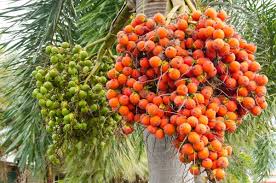Areca nut (Areca catechu) farming requires careful planning and management to ensure a healthy and productive crop. Here’s a detailed package of practices for Areca nut cultivation:
1. Site Selection and Soil Preparation
Climate and Soil Requirements:
- Areca nut thrives in tropical and subtropical climates with well-distributed rainfall.
- Ideal temperature: 14-36°C.
- Suitable for a variety of soils, but well-drained, deep loamy soils rich in organic matter are best.
- Soil pH: 5.0 to 8.0.
Land Preparation:
- Clear the land of weeds and debris.
- Plow the land thoroughly to a depth of 30 cm.
- Level the field to facilitate proper irrigation and drainage.
2. Planting Material and Planting
Seed Selection:
- Use fully mature, disease-free nuts from high-yielding mother palms for seeds.
- Nuts should be soaked in water for 48 hours before sowing to enhance germination.
Nursery Raising:
- Sow seeds in nursery beds or polybags.
- Germination takes about 45-60 days.
- Transplant seedlings to the main field when they are 10-12 months old and about 30-40 cm in height.
Planting:
- Planting time: June to August, coinciding with the onset of monsoon.
- Spacing: 2.7 x 2.7 meters (approx. 1350 palms per hectare).
- Dig pits of 60 x 60 x 60 cm and fill with topsoil mixed with compost or FYM.
3. Nutrient Management
Fertilization:
- Apply well-decomposed FYM or compost at 12-15 kg per palm annually.
- Chemical fertilizers: Apply NPK at 100:40:140 grams per palm annually.
- First year: 10% of the adult dose.
- Second year: 30% of the adult dose.
- Third year onwards: 100% of the adult dose.
- Split the fertilizer dose into two: one during pre-monsoon (April-May) and the other post-monsoon (September-October).
4. Irrigation Management
Watering Schedule:
- Regular irrigation is crucial, especially during dry periods.
- Frequency: Irrigate every 3-5 days during summer and once every 10-15 days during the rainy season.
- Avoid water stagnation around the base of the palms.
5. Weed Management
Weed Control:
- Manual weeding around the palms is recommended 3-4 times a year.
- Mulching with organic materials like coconut husk or leaf litter helps control weeds and conserve moisture.
6. Pest and Disease Management
Common Pests:
- Mites, root grubs, and spindle bugs.
Common Diseases:
- Bud rot, stem bleeding, and fruit rot.
Control Measures:
- Use disease-free planting material.
- Ensure proper field sanitation.
- Regularly monitor and apply recommended pesticides and fungicides.
- Remove and destroy affected parts immediately to prevent the spread.
7. Harvesting and Post-Harvest Management
Harvesting:
- Areca nut palms start bearing fruits from 5-6 years of age.
- Harvest twice a year, typically in April-May and December-January.
- Nuts are harvested when they are fully mature but still green.
Post-Harvest Processing:
- De-husking:
- Remove the husk to extract the nuts.
- Boiling and Drying:
- Boil the de-husked nuts for 30-40 minutes.
- Dry boiled nuts in the sun for 2-3 weeks.
- Polishing:
- After drying, polish the nuts to improve their appearance.
8. Storage
Storage Conditions:
- Store dried nuts in a cool, dry place.
- Ensure proper ventilation to prevent mold growth.
- Use jute bags for storing dried nuts to maintain quality.
9. Marketing
Market Channels:
- Sell fresh or dried nuts through local markets, wholesalers, or cooperatives.
- Explore value-added products like processed areca nut or betel quid for better profitability.
Additional Tips
- Intercropping:
- Consider intercropping with crops like banana, cocoa, or pepper during the initial years to optimize land use and increase income.
- Organic Farming:
- For organic farming, avoid synthetic chemicals and use organic manures and bio-fertilizers.
- Record Keeping:
- Maintain records of farming activities, inputs used, and expenses for better management and traceability.
Implementing these practices should help you achieve a successful areca nut farming venture. For more region-specific advice, consult local agricultural extensions or experts.






